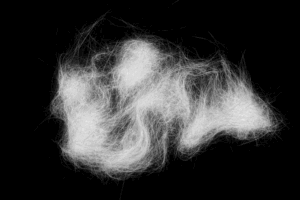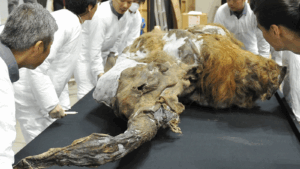Harnessing the Powers of a Limitless Cell
Stem cells, the building blocks of the body, are “master” cells that divide to form specialized cells. Most ongoing investigations of stem cells focus on pluripotent stem cells, which are self-replicating and divide into one of three primary cell groups: the ectoderm, endoderm, and mesoderm (1).

Although scientists are currently unable to reproduce stem cells through a prolific method, scientists at Sanford Burnham Prebys Medical Discovery Institute (SBP), a non-profit institute focused on cancer research, discovered that the OCT4 protein, an Octamer transcription protein, is partially responsible for the differentiation of stem cells in August, 2016 (2).
Dr. Laszlo Nagy, director of the Genomic Control of Metabolism Program at SBP says that through the discovery of the OCT4 protein, “in a sense, we’ve found the code for stem cells that links the input-signals like vitamin-A to the output-cell type” (2). OCT4 regulates gene activity by attaching to DNA to either initiate or repress specific genes (2). Once the OCT4 has expressed certain genes, a stem cell undergoes division, producing a duplicate stem cell and a daughter cell. The duplicate stem cell replaces the original stem cell, while the daughter cell continues to divide and differentiate until it becomes a mature cell type, such as a red blood cell.
The ability to differentiate into variegated tissues makes stem cells particularly valuable in both generating cells for medicine and helping doctors better understand diseases. Procedures that require the regeneration of tissue such as neurons frequently rely on stem cell therapy, but researchers have also begun to apply the therapy to a more extensive group of tissues. Scientists have utilized stem cells in treating patients with visual loss and patients who have suffered heart degeneration (4). Recently, stem cell therapy has been used in creating pancreatic cells as a treatment for diabetes (4).

Stem cell treatments may also assist in future treatments and cures. Currently, there is no proven cure for Alzheimer’s Disease (6). However, through clinical trials, doctors have also used stem cell treatment to combat neurological deterioration in Alzheimer’s and Parkinson’s patients, which is promising for the future of stem cell-related treatments (5). Institutions such as the California Institute for Regenerative Medicine have invested heavily in the promising future of stem cell treatment, granting hundreds of millions of dollars to various researchers collecting and analyzing data in patients with Alzheimer’s. In recent years, scientists have found that neurogenesis, the process of producing neurons through neural stem cells, exists in certain regions of the adult brain (6). Stem cell-based neuro-replacement therapies utilizing this information may lead to cures for previously untreatable diseases.
– Dylan Wang
References
- Stem Cells. (2019, June 8). Retrieved from https://www.mayoclinic.org/tests-procedures/bone-marrow-transplant/in-depth/stem-cells/art-20048117
- Breakthrough in understanding how stem cells become specialized. (2016, August 4). Retrieved from https://www.sbpdiscovery.org/news/beaker-blog/breakthrough-understanding-how-stem-cells-become-specialized
- Stem Cell Differentiation. (2020). Retrieved April 10, 2020, from https://www.tocris.com/cell-biology/stem-cell-differentiation
- Lee, Youn, C., Kim, Onju, Lee, Kim, … Woochul. (2016, October 18). Therapeutic Potential of Stem Cells Strategy for Cardiovascular Diseases. Retrieved from https://www.hindawi.com/journals/sci/2016/4285938/
- What diseases and conditions can be treated with stem cells? (2016, November 17). Retrieved from https://www.eurostemcell.org/what-diseases-and-conditions-can-be-treated-stem-cells
- Tang, J. (2012, January 5). How close is the stem cell cure to Alzheimer’s disease: Future and beyond? Retrieved from https://www.ncbi.nlm.nih.gov/pmc/articles/PMC4354121/
Images






Be First to Comment